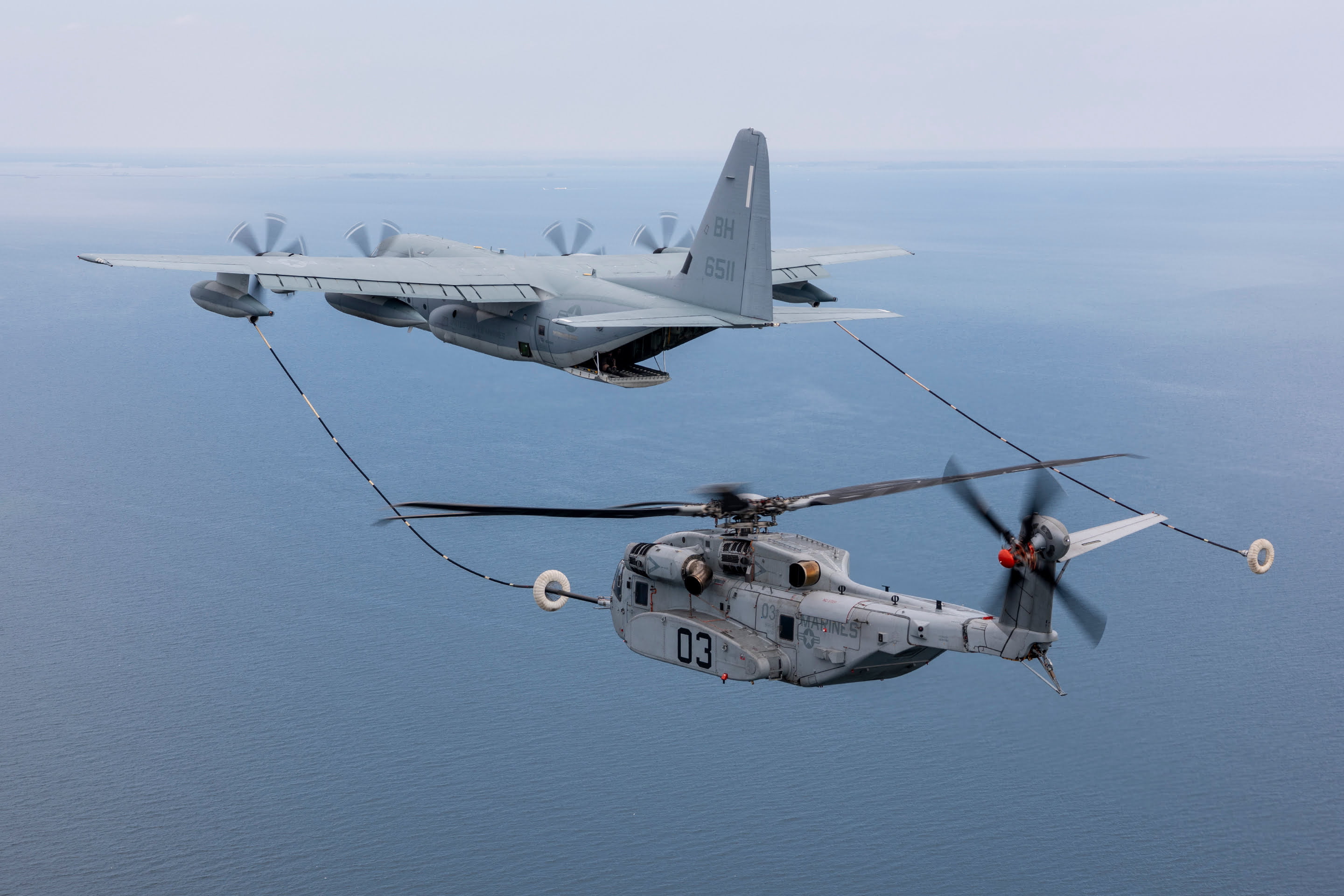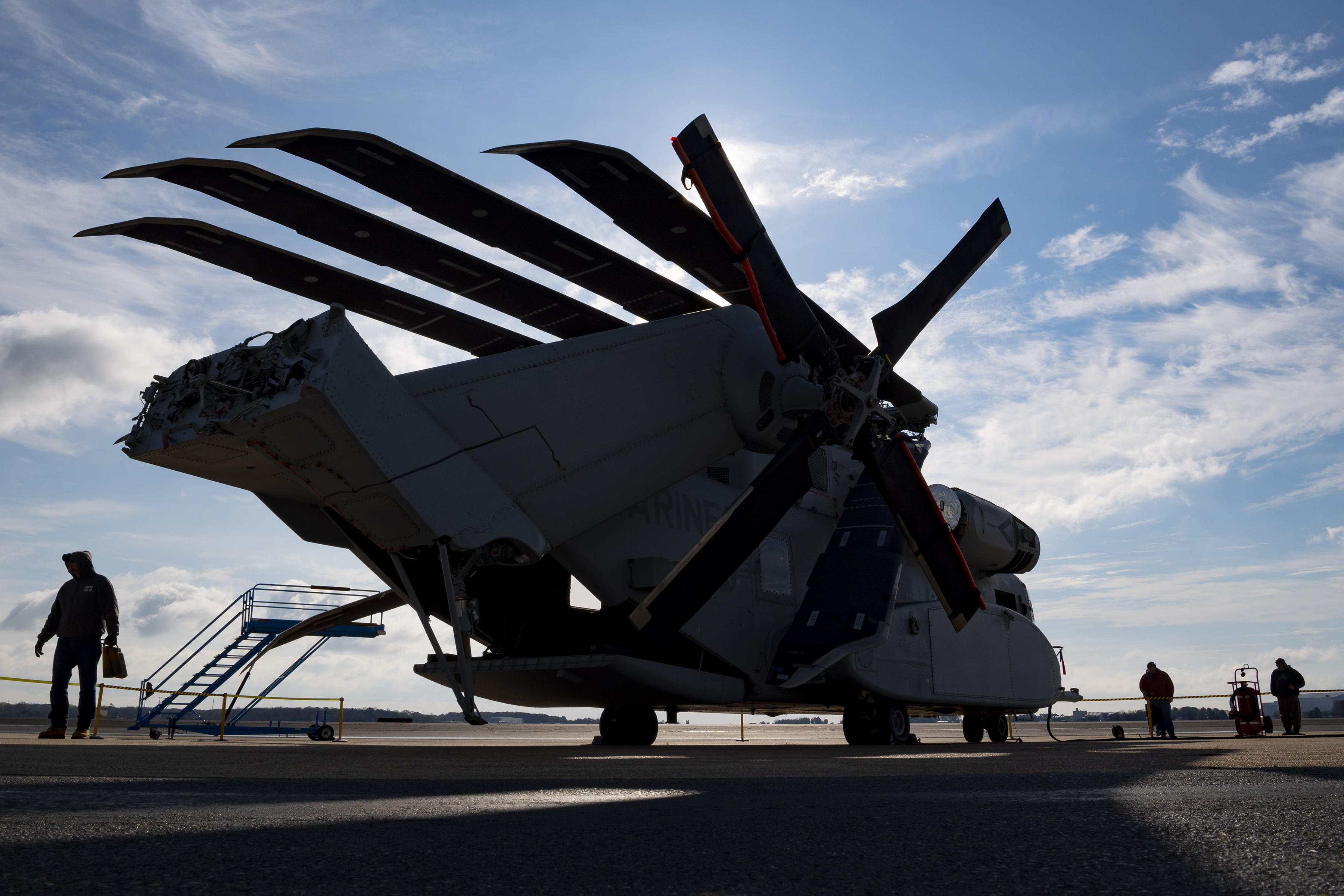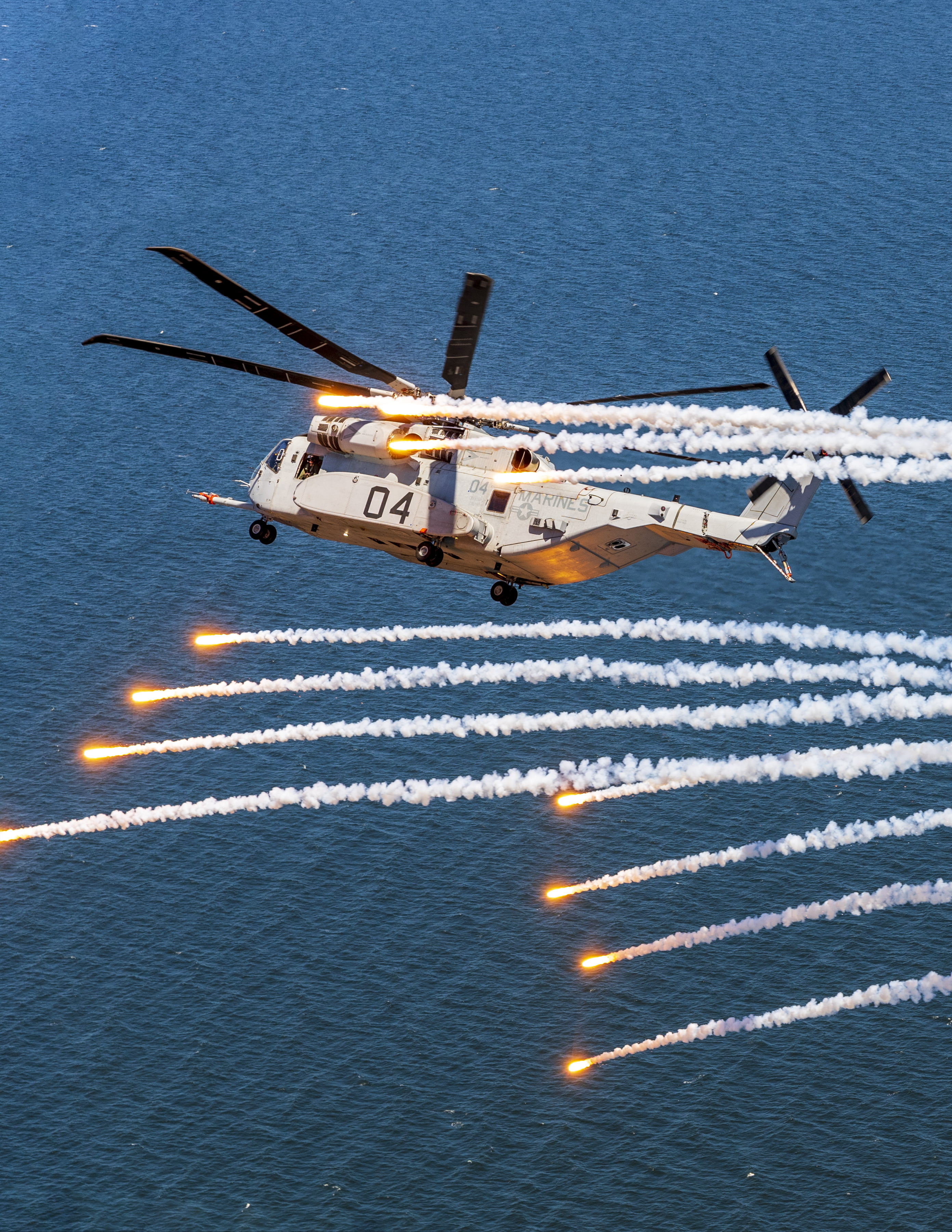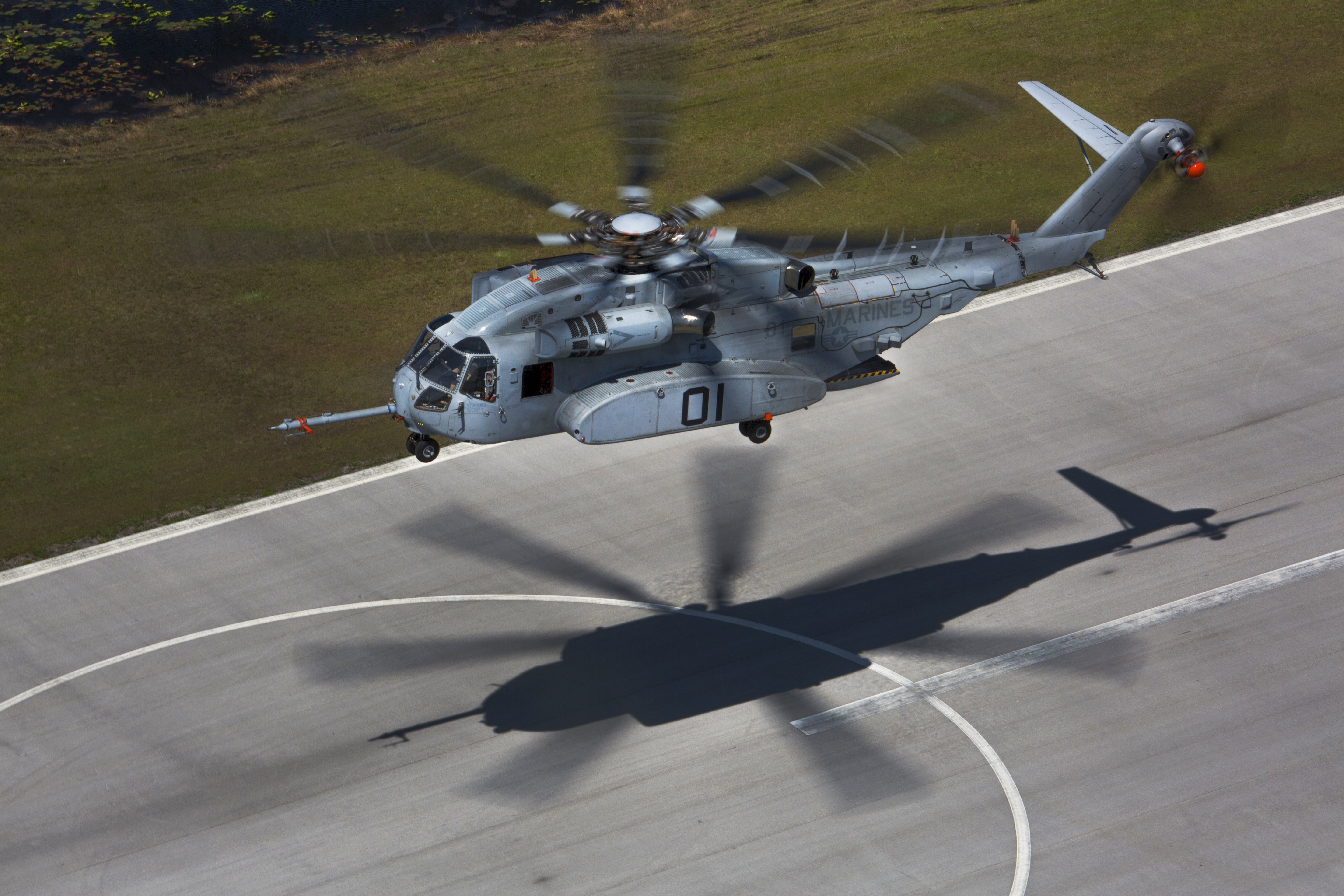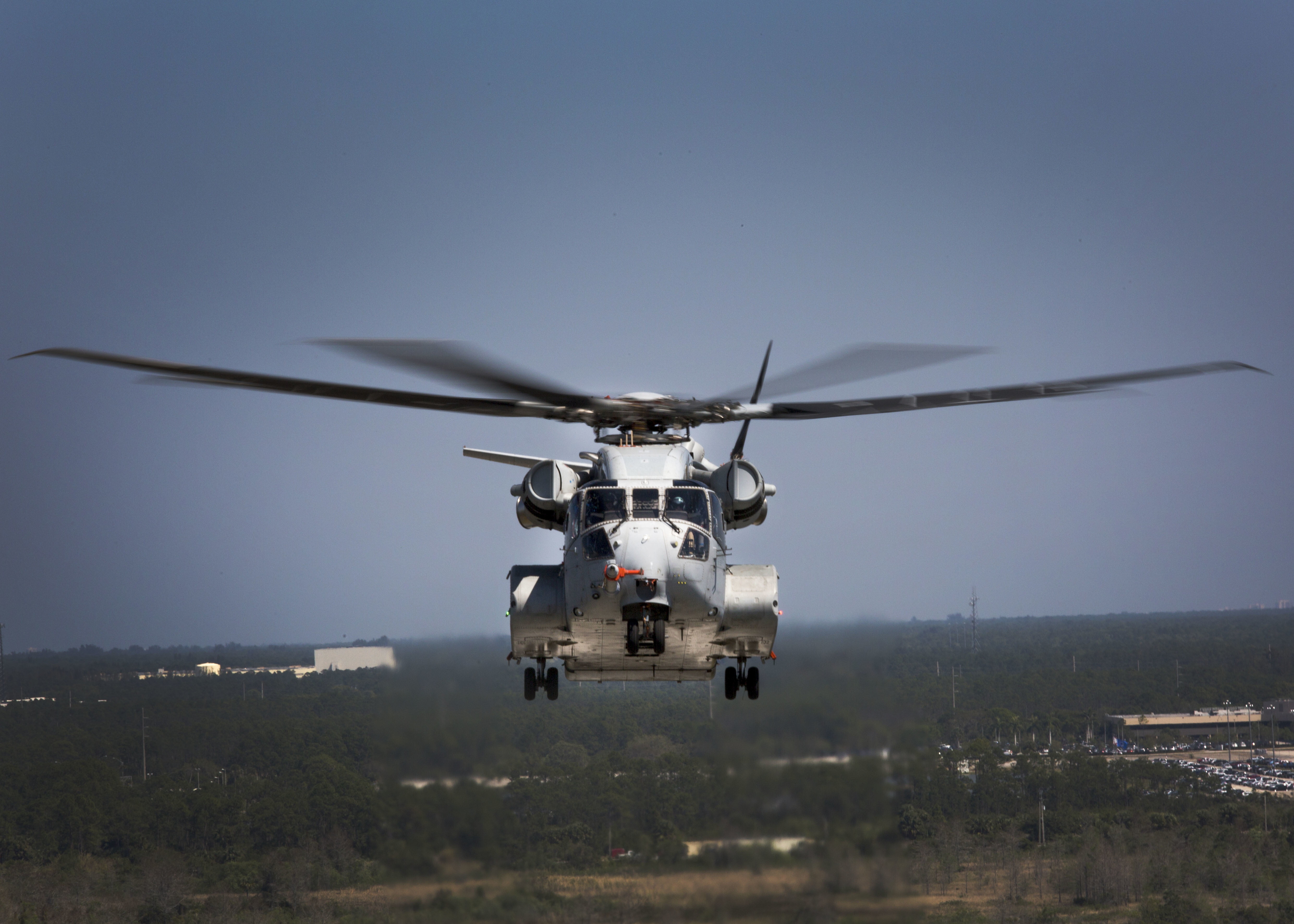By Robbin Laird
Sikorsky is working with NAVAIR and the USMC to deliver a new build heavy lift helicopter, the CH-53K.
This is a digital aircraft, while its predecessor the CH-53E, is a mechanical aircraft.
What this means is that the aircraft is digitally designed and manufactured by means of a digital thread production and assembly process.
This digital thread process provides a path to tap into operational data for the sustainment process.
In turn, this enables operational and sustainment data to flow back into the upgrade, redesign, and manufacturing process.
Digital design, build, sustainability forms a feedback process which unlocks more effective, including cost effective ways to manage the aircraft’s life cycle
In this article, I will highlight the nature of the design and build process for the CH-53K while the next article will focus on the sustainment and modernization processes which digital build empowers and enables.
After the first two articles, I will focus on the impact on USMC operations of having a digital heavy lift aircraft, empowering evolving expeditionary capabilities of the USMC itself.
On May 20, 2020, I had a chance to hold a teleconference with two Sikorsky manufacturing leaders involved in the design and build process.
My interlocutors for the digital design and build discussion were William Falk and Andrea Ulery.
I have included both of their biographies at the end of this article: William Falk is the Director and Program Manager for CH-53K within Sikorsky and Andrea Ulery is the CH-53K Program Director for Production.
I visited the Connecticut factory two years ago, and had a chance to talk with engineers, managers, and others as I became familiar with the establishment of the CH-53K manufacturing process.
One thing that was obvious from visiting the plant was how much larger the CH-53K is than other helicopters being built at the plant, and the need to accommodate its size on the assembly line and to find ways to enhance productivity working within and outside of the heavy lift aircraft going through an assembly line build process.
Even though the CH-53K has a similar and slightly smaller footprint to the CH-53E, which was done precisely to ensure that the new build helicopter could fit into the Navy’s existing amphibious fleet, the CH-53E aircraft was built many years ago. That the production line has been retired in the Sikorsky facility.
A new production line has been set up for the CH-53K built around the digital thread production approach and process.
With regard to the physicality of the CH-53K within the Connecticut plant, Ulery noted: “The CH-53K is a much larger aircraft than the Blackhawk and takes up a larger footprint on the floor.”
Bill Falk added: “It’s also a very different looking production line.
“The line is much cleaner and more open with regard to the work stands and workstations from position to position on the manufacturing line.
“It is clear right away that we are manufacturing the CH-53K in a very different way as compared to 1970s-designed Hawks.”
I did raise the question of the challenges of shaping understanding of how different the CH-53K is from the CH-53E given they look similar in many ways externally.
Bill Falk referred to it as both a blessing and a challenge that the CH-53K looks a lot like the CH-53E.
The casual observer would not see a dramatic difference between the two aircraft which is important as it allows for minimal disruption in the fielding of the brand-new aircraft into the existing naval infrastructure.
Falk noted: “However, because the CH-53K looks so similar to the 53E, it’s not easily recognizable or understood how different it is in terms of its overall capabilities.
“This is not just about increased lift and range, but also how well it goes together on the production line because we used an all-digital design from the beginning.
” The aircraft on the production line now are coming together much easier than previous generation aircraft at Sikorsky.”
“Nobody would know by looking at the CH-53K that it has an all-digital fly-by-wire flight control system that delivers impressive handling qualities and preciseness in flying, landing and picking up and transporting loads.”
We then discussed how the digital design process, which preceded the build process, has shaped a more effective way ahead for production and assembly.
A major challenge, of course, is to ensure that the different subsystems on the aircraft are integratable within the overall digital architecture of the aircraft and are built in such a way that the aircraft can operate onboard a ship without interfering with the onboard ship sensors and system as well.
This is what is meant by the marination of an aircraft operating and living onboard a ship.
According to Falk, a key part of the design effort was shaped by the system integration laboratory which was established at the outset of the program.
“In the system integration lab, we worked integration of the fly-by-wire flight control computers, servos and hydraulics allowing us to actually energize and drive the servos just like when it’s all fully integrated and built on the aircraft.”
With regard to the ship side of the integration process, Falk noted that “the CH-53K will be going onboard an amphibious ship in the near term to test the ‘system of systems’ effect on the ship and the effect of the ship on the aircraft.”
We then discussed the impact of such an integrated digital design and production process on the effectiveness of the manufacturing process.
According to Andrea Ulery: “This is my fourth production program which I’ve worked on in my time with Sikorsky.
“And it’s my third where I started at the very beginning or very early in the production program.
“The CH-53K is the most effective early production process which I have been involved with.”
It is clear that with regard to a digital thread production line, “the manufacturing engineering team is embedded with the team that builds the aircraft,” according to Ulery.
We then discussed some of the digital work constructions and the digital tools that Sikorsky is using to build the aircraft.
Ulery highlighted a number of innovations associated with the production process.
Remembering the size of the aircraft poses specific challenges, the design of the manufacturing process has been shaped to better manage the challenges of producing a large combat helicopter.
The first is managing the workflow by using lifting devices that allow workers to work in an ergonomically safe position.
She mentioned the use of lifting devices to handle the airframe and its integration with landing gears as one example of this process.
The second is “our creative engineering team have come up with ways to allow us to lift and integrate harnesses, which are incredibly heavy, into the aircraft in a safer manner, which also makes it go faster in terms of the production process as well.”
The third is the use of 3D printing technology on the line.
The harnesses are very heavy as they span the length of the helicopter itself. “We’ve been able to manufacture 3D printed devices that allow us to hold and more accurately integrate where the harnesses drop off and work their way through the airframe.”
Ulery highlighted as well that with the digital systems workers can take their work instructions or digital design data into the aircraft and work directly from their computers rather than using remote terminals.
“As they go to work onto aircraft every day, they are able to access their laptop for everything that they need, including, work instructions, 3D modeling, and additional referential material. It’s all at their fingertips. And to a person, they love having that capability easily accessible to them.”
The result according to Ulery: ‘I don’t see the volume of questions that I used to see early in a build which strengthens the case that it we’ve done a good job on the foundation.”
From my perspective, a foundation has been laid from design to production to sustainment and back to modernization and then back to design and production which provides a very new capability to build out capabilities in the future for the CH-53K.
And with an all digital aircraft, one which is digitally interoperable with the entire USMC force, new options and capabilities are opened for the USMC as a centerpiece force for expeditionary warfare.
William Falk, Director and Program Manager, CH-53K
William (Bill) Falk manages all aspects of the CH-53K program, including cost, schedule and technical execution. His responsibilities span across development, production, and sustainment and serves as the primary interface for both internal and external customers. In addition, Falk has a focus on flight testing, transition to production, production execution to full rate, stand-up supportability and sustainment capabilities, and will team with the appropriate stakeholders to support business capture both domestic and internationally.
Bill has over 18 years of Sikorsky experience. Bill joined Sikorsky in 2002 as an Engineer and has held roles of increasing responsibility in engineering, program management, and operations. He most recently served as Program Director, Canadian Maritime Helicopter Program (CMHP) where he successfully managed program execution, including all qualification and production efforts to achieve business objectives and enhance profit potential. Previously he was General Manager, Avionics Product Center, where he was responsible for the Avionics value stream operations, including management of a global supply chain base with over 200 suppliers that span 3 continents and 14 countries. Bill also spent 13 years in positions of increasing responsibility in engineering at Honeywell and General Dynamics prior to joining Sikorsky.
Bill holds a Bachelor of Science degree in Electrical Engineering from Penn State University.
Andrea R. Ulery, CH-53K Program Director, Production
Andrea Ulery was named CH-53K Program Director, Production in March 2019. Ms. Ulery’s leadership responsibilities span the capture, production and retrofit of CH-53K aircraft for the United States Marine Corps. Prior to joining the CH-53K team, Ms. Ulery was responsible for development and production on the VH-92A Presidential Helicopter Replacement program.
She has held roles of increasing responsibility in program and operations management within Sikorsky Aircraft, including flight test and production of MH-60R and UH-60M aircraft, Federal Aviation Administration type certification of the VH-92A, and manufacture of avionic and rotor blade assemblies.
Ms. Ulery holds a Bachelor of Science degree in Liberal Studies from Southern Connecticut State University, and a Master of Business Administration from the University of Connecticut.
For a Lockheed Martin video, highlighting the digital thread process, see the following:
For our archive of CH-53K articles, see the following:
https://defense.info/system-type/rotor-and-tiltrotor-systems/ch-53k/



